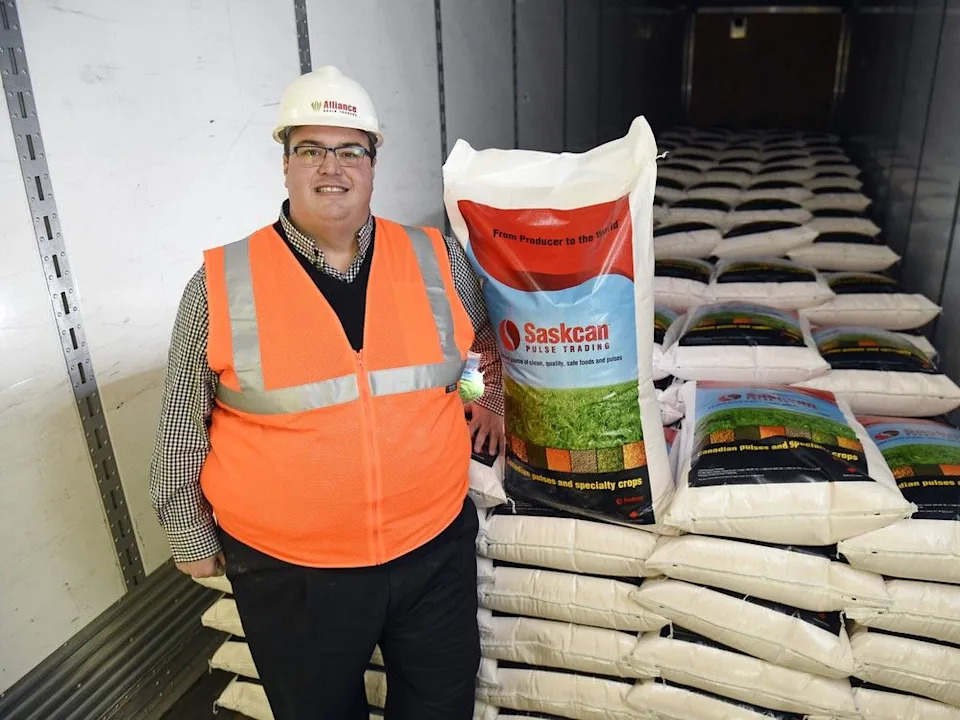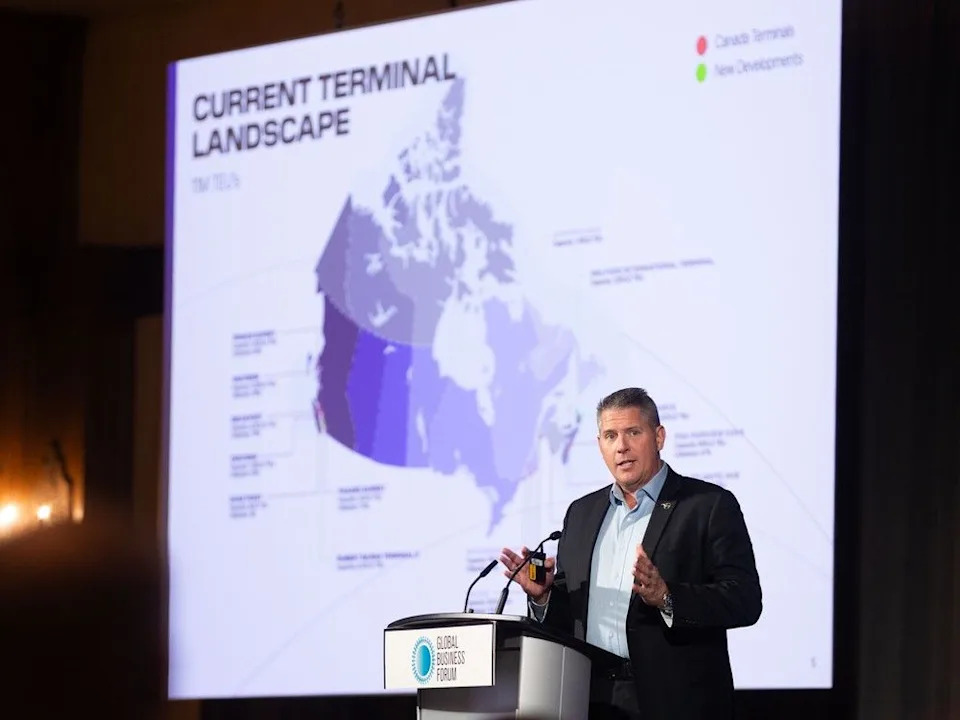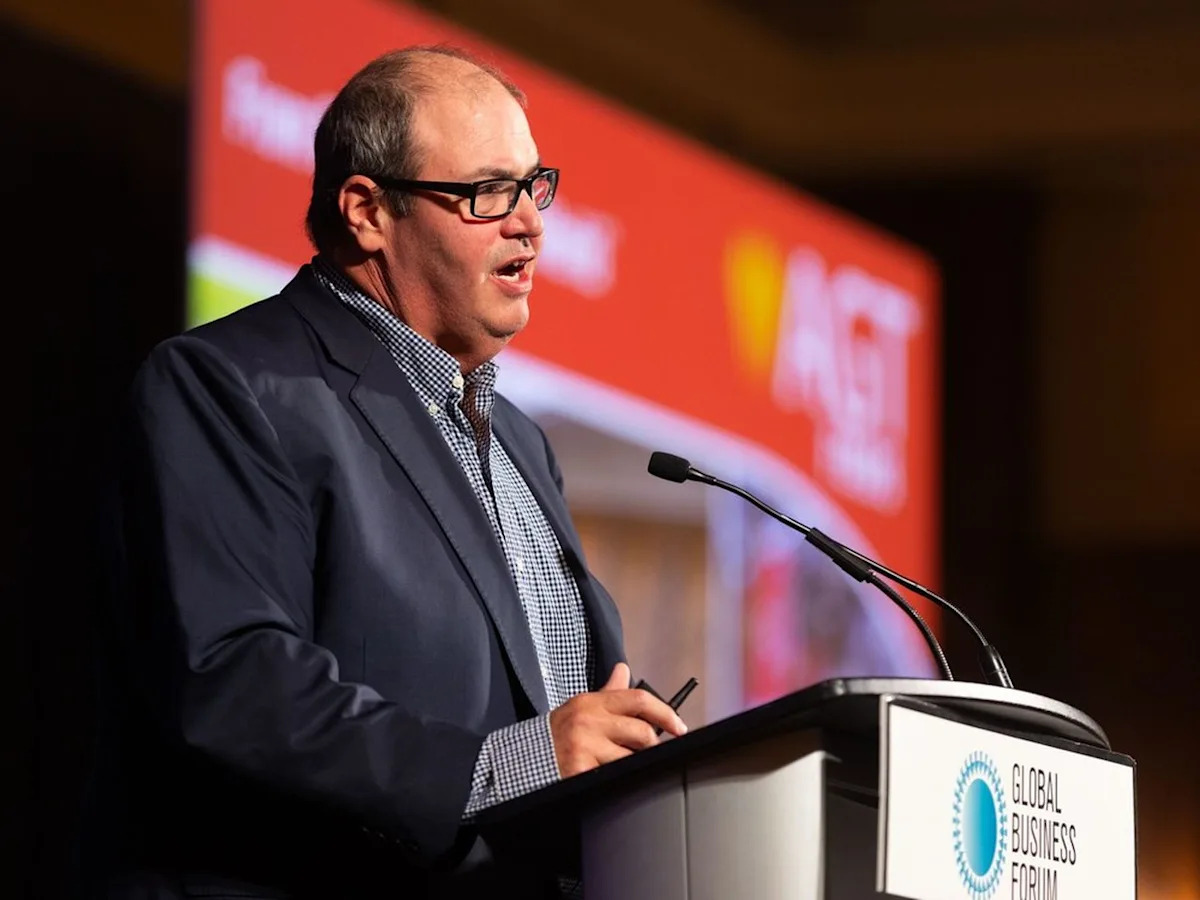Sweeping tariffs imposed by U.S. President Donald Trump are forcing Canada to look inward — and beyond its southern neighbour — to forge new trade opportunities.
With Canada-U.S. trade relations on the rocks, Canada has been working toward “nation-building” projects under Prime Minister Mark Carney’s new agenda, while provinces look at removing barriers to interprovincial trade.
Two scarce resources in the world are fresh water and land — resources that Canada has in abundance, according to Murad Al-Katib, chief executive, AGT Food and Ingredients Inc., a global food distribution company based in Saskatchewan.
“Food, fuel and fertilizer are going to be the drivers of the new generation economy of this country,” Al-Katib said.
Looking at those factors, Canada has to be “the solution” to the world’s needs — ultimately playing the role of exporter as trade relationships change, he added.
Al-Katib made the comments at the Global Business Forum in Banff, Alta.
Between 75 and 80 per cent of Canadian exports flow through the U.S., or around $800 billion worth of goods in 2024, according to TD Economics. Canada is also the U.S.’s second-largest trading partner behind Mexico.

Murad Al-Katib, President and Chief Executive Officer of AGT Food and Ingredients Inc., inside the companies processing plant in Regina.
In terms of tariffs, eventually Canada will “thank” Trump, Al-Katib said.
“Trump has punched us in the nose, and we needed it.”
Recognizing the value of U.S. trade, he said Canada should keep trading with the “golden goose” and aim to trade even more.
However, increasing Canada’s trade with other nations to shift away from over 50 years of reliance is important, according to Al-Katib.
Born in Saskatchewan, Al-Katib started what became AGT in 2001 with a small facility in Regina. He has since expanded the business to 46 facilities around the world and 3.2 billion in revenue.
Inland ports needed to move freight within the country says logistics CEO
DP World CEO Doug Smith speaks at the Global Business Forum in Banff Friday.
Doug Smith, chief executive of North American logistics giant DP World Canada, spoke alongside Al-Katib at the forum.
Ports, particularly on Canada’s coasts, have been discussed under the veil of Carney’s nation-building agenda, though only one port expansion was included in the initial project list.
Smith argues that if Canada truly breaks down interprovincial trade barriers, a whole new set of logistics would be needed to get that freight moving.
That would come in the form of ports — but particularly inland ports, which cost about one quarter that of their coastal counterparts.
Still, the work required is extensive.
“This isn’t one or two warehouses and one rail depot,” Smith said. “This is tens of thousands of acres of planning that sets you up for not just what you need today, but where you’re going to go tomorrow.”
Smith has visited many Canadian cities, including Calgary, to discuss the potential of inland ports with municipal officials and business stakeholders.
He identified over half a dozen potential inland terminal sites, including Calgary, Edmonton, Nanaimo, B.C., Saskatoon, Regina and Winnipeg, among others.
Calgary has its own ambitions with Prairie Economic Gateway — which aims to become the largest logistics centre in Western Canada by 2027, taking up approximately 1,300 acres in the city’s east.
“It’s great that the cities are interested, that we got that support,” Smith said in an interview. “Now let’s find the customers who understand the shift that needs to happen.”
Often, shipments of Canadian goods may pass through the U.S. to be shipped elsewhere — in some cases, even being shipped back to Canada, he noted.
“Why are Canadians shipping through the U.S. instead of using Canadian infrastructure? Where’s that answer? If you want to build a great inland port, you have to answer that question,” Smith said.
Looking to Canada’s north, there is an “immense opportunity” for commodities that could be utilized.
“When we look at what’s happening down south . . . that’s a wake-up call — let’s use it,” Smith said.
Global Business Forum logo


